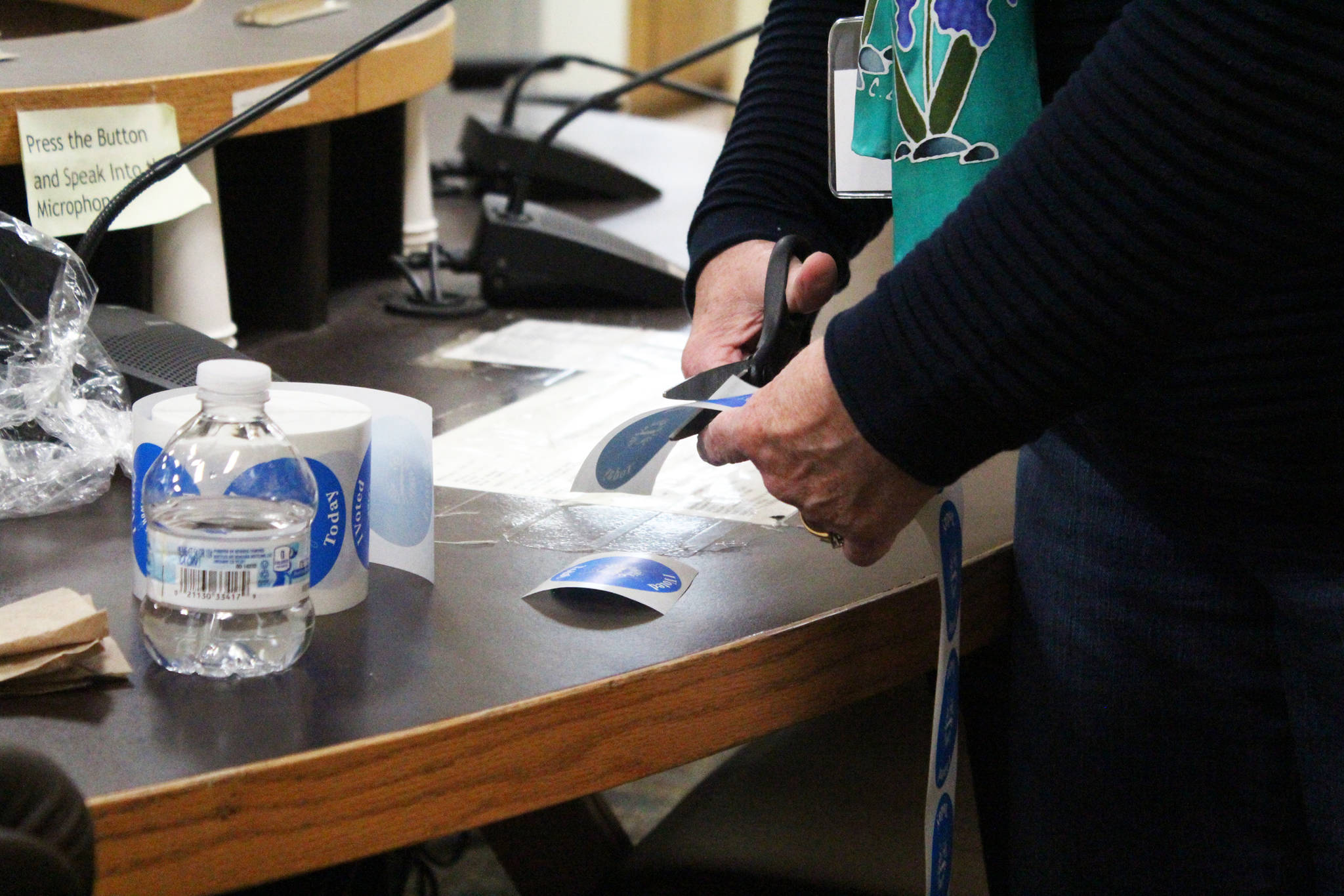“Relieved.”
That was Homer City Manager Katie Koester’s reaction on election night to passage of Proposition 1, a change to city code allowing the Homer Accelerated Roads and Trails fund to also be used for roads and trails maintenance. While all three Kenai Peninsula Borough propositions failed, in Homer, Prop. 1 passed by 78 percent according to preliminary election results. “Yes” votes were 971 to 280 “no” votes.
Under HART, revenues from a .75-percent city sales tax go to building new roads and trails or projects like paving gravel streets. Recent projects supported by HART include the Grubstake Road extension, new Karen Hornaday Park trails and sidewalks along Soundview Avenue.
Koester said she wasn’t surprised by the strong support for Prop. 1. A vote in 2016 to suspend for three years allocating the .75-percent tax to HART and using it for the general fund passed by 76 percent. That suspension ends at the end of 2018.
“This is certainly a more cautious, reasonable approach that maintains the intent of HART,” Koester said. “This is a more conservative approach. I think that was reflected in the vote.”
Kimberly Ketter, the only Homer City Council candidate to oppose Prop. 1, said she wasn’t surprised it passed.
“I expected it to go like it did last time,” she said in a phone interview on Wednesday from Florida, where she’s working on hurricane disaster relief. Ketter referred to a 2015 ballot proposition that suspended putting the 0.75-percent of the HART sales tax into the fund.
Ketter said she opposed using HART funds for maintenance because “it still should go into the trails and roads and finishing them.”
With the passage of Prop. 1, HART funds can now be used for snowplowing, street cleaning, pothole repairs, dust control, gravel purchase, pavement striping, signage, purchase of road and trail equipment and tools, trail clearing and sweeping, and trail head maintenance. The 2017 budget for such maintenance is about $700,000. By using HART funds for maintenance, that frees up more money in the general fund and gives the city more flexibility in writing its budget — a task Koester is doing right now. She presents a draft budget to the council on Oct. 9 and an ordinance is introduced on Oct. 30.
Had Prop. 1 failed, Koester said, “We would be coming right back to the community to get feedback on what services they were willing to live without. I am happy that is not the conversation that will dominate 2018.”
At the same time, the city “will still need to be lean and cautious with spending,” Koester said. Prop. 1 won’t help the city free up any money in its future budget for major capital projects like a new police station.
Prop. 1 expands on a change to the 2016 vote in which citizens approved a 3-year suspension of HART tax revenues to pay for general government that helped fill a $1.2 million gap between revenues and a budget that did not reduce major services. Koester said she is preparing the 2018 budget using the funds from the suspension. Prop 1 does not continue the suspension and does not create a new tax or increase sales taxes, keeping the sales tax at 4.5 percent.
The 0.75-percent HART sales tax raises about $1 million to $1.2 million a year depending on overall sales tax revenues. In 2016, it earned $1.1 million for roads and $128,000 for trails, according to Jenny Carroll, special projects and communications coordinator. According to a fact sheet from the city, about $504,000 is paid annually for HART capital improvement projects now authorized under the program, such as the Greatland Street extension. For 2016 HART revenues, that would leave about $780,000 available for road and trails maintenance if Prop 1 passes.
Koester praised the Homer City Council for having the foresight to put Prop. 1 on the ballot and propose using HART funds for maintenance before the 3-year suspension ran out.
“It’s really quite nice to have a year to figure out how to adapt that in 2018,” Koester said. “…They’re making my job easier.”
With passage of Prop. 1, the next step will be for the council to set up in city code rules for how HART funds can be used on maintenance.
“Council will set up in city code parameters and guidelines for how much goes to capital and maintenance, and just set up some clear ground rules on how that looks like. It’s so nice to be thorough,” Koester said.
Koester said she sees about half of HART going to maintenance and half for capital projects, but the exact portion will be put in code.
Reach Michael Armstrong at michael.armstrong@homernews.com.


